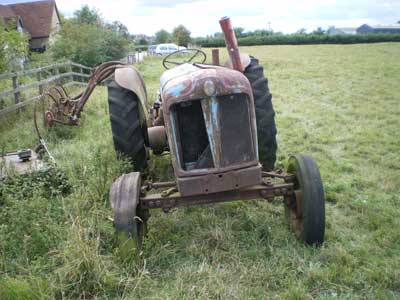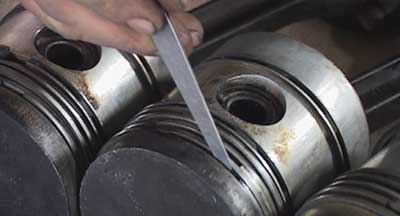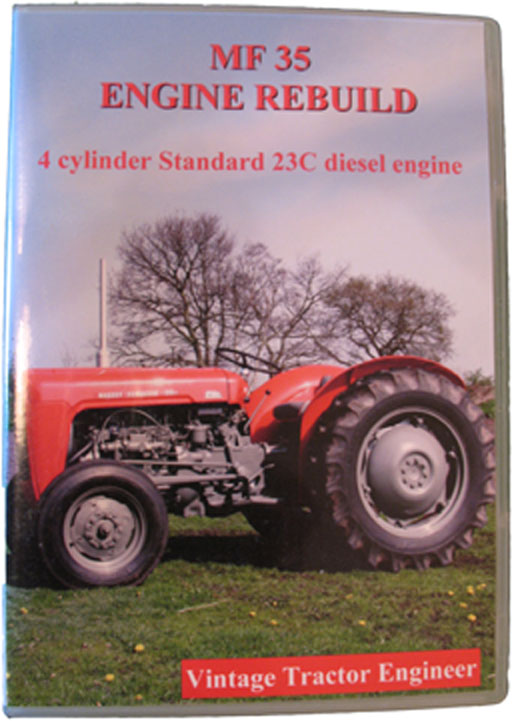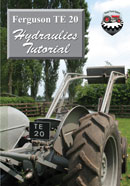Want to check out our tractor maintenance videos? Click here to see what we've got!
It is quite common for rain water to get down a tractor exhaust pipe and into a cylinder. Often people have put a tin can over the exhaust to protect it, but then the wind has blown the can off.
The question is what we need to do to remove the water and make the engine safe to start.

‘Hedgerow’ tractors stood outside for many years will probably have water in the exhaust pipe and in the cylinders.
The Problem
At any one point in an engine’s rotation it is probable that at least one exhaust valve will be open, and therefore some water will have got into at least one of the cylinders. This water must be removed.
The reason the water must be removed is that water is not compressable. So if you were to leave the water in the cylinder then the pressure would put excess pressure on the valves and likely bend a connecting rod, the crank or do worse damage.
The Procedure
You will certainly need to remove the exhaust and exhaust manifold to remove any water that is still in there.
You will also need to change the oil in case water has run down into the sump. You should really change the oil before undertaking the next procedure of turning the engine over.
Remove all the injectors (or spark plugs if a petrol engine) and make sure there is no dirt around the injector ports. Then turn the engine over, first by hand a few times and then by using the starter motor. Hopefully this should squirt the water out of the cylinders. The engine could be seized (rusted) if the water has been there for some considerable time. In that case you would need to follow a procedure for unseizing an engine.
The water may have caused rust on the valves or cylinder liner. You would need to remove the cylinder head to inspect this.
There is a difficulty in knowing if you have got all (or sufficient) of the water out of the cylinder so it does not cause hydraulic lock. Obviously expelling the vast majority of the water will reduce the chances of hydraulic lock occuring.
I would keep checking the condition of the oil once you get the tractor running again. It would be prudent to change the oil again within a few moments of running the engine and then maybe again after running the engine up to temperature (a hot engine will help evaporate and then emulsify any water into the oil). Certainly you should keep an eye on the physical appearance of the oil.
One More Thing.
If ther have been freezing temperatures whilst the water was in the cylinder, this could have cracked the liner or block.





